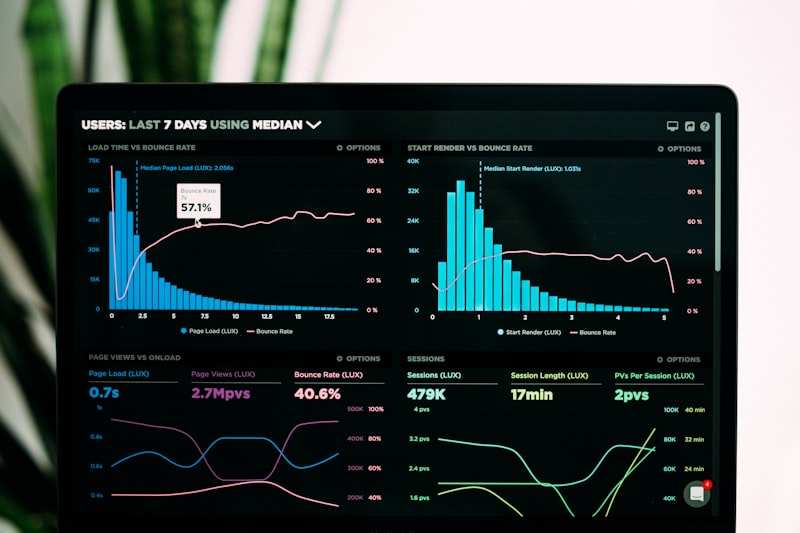In today's digital landscape, having a professional website is no longer optional for small businesses—it's essential. Your website serves as your digital storefront, often providing potential customers with their first impression of your business. However, many small business owners delay creating a website due to concerns about cost. The good news is that building a professional website doesn't have to break the bank. This comprehensive guide will walk you through the process of creating an effective small business website on a budget, providing practical strategies and affordable solutions.
Understanding Your Website Needs
Before diving into website creation, it's important to clarify what your business actually needs from a website. This will help you avoid overspending on unnecessary features while ensuring you invest in what matters most.
Key Website Statistics
75% of consumers judge a business's credibility based on its website design. Meanwhile, 88% of online consumers are less likely to return to a site after a bad experience. A simple but well-designed website can significantly impact your business growth.
Start by listing your must-have features versus nice-to-have features. This prioritization will help you allocate your budget effectively and avoid paying for functionality you don't need yet. Remember, you can always add more features as your business grows.
Budget-Friendly Website Creation Options
There are several approaches to building a website, each with different cost implications. Let's explore the most budget-friendly options for small businesses:
Website Builders
Platforms like Wix, Squarespace, and WordPress.com offer drag-and-drop interfaces that make it easy to build a professional-looking website without coding knowledge.
Cost: $0-25/month
Self-Hosted WordPress
WordPress.org offers more flexibility and control than website builders, though it requires separate hosting and a slightly steeper learning curve.
Cost: $3-10/month for hosting + free WordPress
Freelancer Collaboration
Working with a student or entry-level freelancer can be affordable while still getting a custom website built for you.
Cost: $300-1,000 one-time fee
One-Page Website
For the tightest budgets, a well-designed single-page website can effectively showcase your business essentials until you can expand.
Cost: $0-10/month
Platform Comparison
| Platform | Ease of Use | Customization | Monthly Cost | Best For |
|---|---|---|---|---|
| Wix | ★★★★★ | ★★★☆☆ | $0-16 | Beginners who need simplicity |
| WordPress.com | ★★★★☆ | ★★★★☆ | $0-25 | Content-heavy sites, blogs |
| Squarespace | ★★★★☆ | ★★★☆☆ | $12-18 | Visual businesses, portfolios |
| WordPress.org | ★★★☆☆ | ★★★★★ | $3-10 (hosting) | Growing businesses needing flexibility |
| Shopify | ★★★★☆ | ★★★★☆ | $29-79 | E-commerce businesses |
Pro Tip
Many website builders offer free trials or free plans with limited features. Use these to test different platforms before committing to a paid plan. This hands-on experience will help you determine which platform best suits your specific needs and technical comfort level.
Step-by-Step Guide to Creating Your Website
Once you've chosen your platform, follow these steps to create your small business website:
Secure Your Domain Name
Your domain name is your website's address (e.g., yourbusiness.com). It's an important branding element and should be:
- Relevant to your business name
- Easy to spell and remember
- Preferably a .com extension (though .co, .net, or industry-specific extensions can work)
Budget tip: Many website builders include a free domain for the first year. Alternatively, look for domain registrar promotions, which can offer domains for as little as $0.99 for the first year.
Choose Hosting or a Website Builder Plan
If you're using a website builder like Wix or Squarespace, select a plan that meets your needs without unnecessary extras. For WordPress.org, you'll need to choose a hosting provider.
Budget tip: Start with a basic plan and upgrade only when needed. Many hosts offer significant discounts for paying annually instead of monthly.
Select a Professional Template or Theme
Your website's design creates the first impression for visitors. Choose a template that:
- Reflects your brand aesthetic
- Is mobile-responsive
- Loads quickly
- Has a clean, modern design
Budget tip: Start with a free or low-cost template and customize it with your branding, rather than paying for premium templates or custom design.
Create Essential Pages and Content
Focus on creating these key pages first:
- Homepage with a clear value proposition
- About page that tells your story
- Services/Products pages with clear descriptions
- Contact page with multiple ways to reach you
Budget tip: Write your own content and use free stock photos from sites like Unsplash or Pexels for imagery.
Optimize for Search Engines (SEO)
Help potential customers find you through search engines by:
- Researching relevant keywords for your business
- Incorporating these keywords naturally in your content
- Creating descriptive page titles and meta descriptions
- Setting up Google Business Profile (formerly Google My Business)
Budget tip: Use free SEO tools like Google Keyword Planner, Ubersuggest, or Yoast SEO (for WordPress) instead of paid SEO services initially.
Test and Launch Your Website
Before making your site public:
- Test all links and forms
- Check your site on multiple devices and browsers
- Have friends or family review for typos or usability issues
- Ensure your contact information is accurate
Budget tip: Use free tools like Google's Mobile-Friendly Test and PageSpeed Insights to check your site's performance.

Creating your own website is more accessible than ever with modern tools
Cost-Saving Strategies for Website Creation
Here are additional ways to keep your website budget in check while still creating a professional online presence:
DIY What You Can
- Content writing: Write your own website copy
- Photography: Take product or team photos yourself with a smartphone
- Logo design: Use free tools like Canva for simple logo creation
- Social media integration: Set up and link your own social profiles
Invest Strategically
- Professional logo: If budget allows, this is worth investing in
- Faster hosting: Site speed affects both user experience and SEO
- Security features: Protect your site and customer data
- Email marketing integration: To build your customer list
Real Budget Breakdown Examples
Bare Minimum Budget: ~$50-100/year
- Platform: WordPress.org with basic hosting ($3-5/month)
- Domain: $12-15/year
- Theme: Free WordPress theme
- Images: Free stock photos
- Content: Self-written
- Logo: DIY using Canva (free)
This approach requires more time investment but keeps costs minimal. It's suitable for businesses just starting out who need a simple online presence.
Balanced Budget: ~$300-500/year
- Platform: Wix or Squarespace basic business plan ($12-18/month)
- Domain: Included in annual plan
- Theme/Template: Included premium templates
- Logo: Fiverr designer ($30-50)
- Images: Combination of stock photos and some professional shots ($100)
- Content: Self-written with Grammarly Premium ($12/month)
This balanced approach saves time while still being cost-effective. It's ideal for established small businesses ready to invest in a more polished online presence.
Growth-Focused Budget: ~$1,000-1,500/year
- Platform: WordPress.org with quality hosting ($10-15/month)
- Domain: $12-15/year
- Theme: Premium WordPress theme ($50-100)
- Design help: Freelancer for customization ($300-500)
- Logo & branding: Professional designer ($300-500)
- SEO plugin: Premium version ($50-100/year)
- Email marketing: Basic plan ($10-15/month)
This approach invests in areas that drive business growth while still being budget-conscious. It's perfect for businesses ready to use their website as a serious marketing tool.
Free and Low-Cost Tools for Website Enhancement
These tools can help you create a more professional website without breaking the bank:
Design & Visual Elements
- Canva: Free graphic design tool for creating images, banners, and simple logos
- Unsplash, Pexels: Free high-quality stock photos
- Coolors: Free color palette generator
- Google Fonts: Free web fonts
Marketing & SEO
- Google Analytics: Free website traffic analysis
- Google Search Console: Free SEO monitoring
- MailChimp: Email marketing with free plan for up to 2,000 contacts
- Ubersuggest: Limited free SEO keyword research
Functionality & Features
- Calendly: Free appointment scheduling
- Google Forms: Free form creation
- Tidio: Live chat with free plan
- HubSpot CRM: Free customer relationship management
Testing & Optimization
- Google PageSpeed Insights: Free performance testing
- Responsinator: Free responsive design testing
- Grammarly: Free basic writing improvement
- BrowserStack: Limited free browser testing
"The secret to building a great website on a budget isn't about how much you spend, but how strategically you allocate your resources."
Common Mistakes to Avoid When Building on a Budget
Being budget-conscious doesn't mean cutting corners that hurt your business. Avoid these common mistakes:
Choosing the Cheapest Option Without Research
The cheapest hosting or builder might cost you more in the long run through poor performance, limited features, or hidden fees. Research thoroughly and choose options that offer the best value, not just the lowest price.
Neglecting Mobile Responsiveness
Over 50% of web traffic comes from mobile devices. A site that doesn't work well on smartphones will frustrate potential customers and hurt your search rankings. Ensure your site is fully responsive, regardless of your budget.
Overcomplicating Your Website
Complex designs and features increase costs and can slow down your site. Start with a simple, clean design that focuses on your core business offerings. You can add complexity as your business grows.
Ignoring Basic SEO
Even the most beautiful website is useless if customers can't find it. Implement basic SEO practices from the beginning to ensure your site appears in relevant searches.
Forgetting Ongoing Costs
Website ownership involves recurring costs like domain renewal, hosting, and platform subscriptions. Budget for these ongoing expenses to avoid surprises.

Future-Proofing Your Budget Website
Building a budget website doesn't mean you're stuck with limited functionality forever. Here's how to create a website that can grow with your business:
Choose Scalable Platforms
Select website builders or CMS platforms that offer upgrade paths as your business grows. WordPress.org is particularly good for this, as it can scale from a simple blog to a complex e-commerce site.
Use a Growth-Friendly Structure
Organize your content and navigation in a way that allows for easy addition of new pages and sections. Think about your site architecture from the beginning.
Invest in a Good Domain Name
Your domain is your online identity. Choose one that represents your business well and that you can use for the long term, even as your business evolves.
Collect Customer Data from Day One
Set up Google Analytics and email sign-up forms immediately. The sooner you start collecting data, the more insights you'll have to guide future website improvements.
Plan for Gradual Improvements
Create a roadmap for adding features as your budget allows. This might include e-commerce functionality, booking systems, or custom design elements that you can implement over time.
Conclusion
Creating a professional website for your small business doesn't require a large budget—it requires smart planning, strategic resource allocation, and a focus on what truly matters to your customers. By following the steps and strategies outlined in this guide, you can build an effective online presence that serves your business needs without unnecessary expenses.
- Start by clearly defining what your website needs to accomplish for your business
- Choose the right platform based on your technical comfort level and business requirements
- Focus on essential pages and features first, adding complexity as needed
- Leverage free and low-cost tools to enhance your site's functionality
- Avoid common budget-website pitfalls that can hurt your business
- Plan for scalability so your website can grow with your business
Remember that your website is an investment in your business's future. While being budget-conscious is important, focus on creating value for your customers rather than simply minimizing costs. A thoughtfully designed website that effectively communicates your value proposition will pay dividends through increased customer trust, improved brand recognition, and ultimately, business growth.
With the abundance of affordable tools and platforms available today, there's never been a better time for small businesses to establish a professional online presence without breaking the bank. Start small, focus on quality, and build your digital presence one step at a time.
